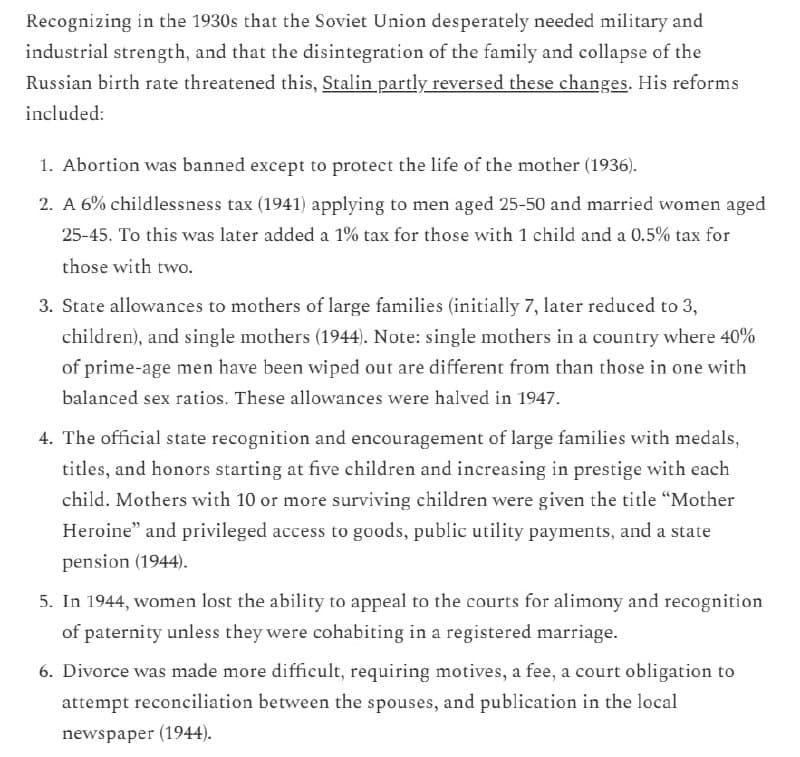Stalin"s Demographic Policies Reversed: Impact on Russia"s Birth Rate Plummets
In a striking illustration of how political ideologies can shape demographic realities, the early years of Bolshevik rule introduced a wave of sexual liberation that was soon curtailed by Joseph Stalin. Concerned with declining birth rates and the potential disintegration of Russian society, Stalin implemented policies that reversed the sexual revolution initiated by the Bolsheviks. However, following Stalin"s death and the subsequent de-Stalinization period, these policies underwent another reversal, leading to a dramatic decline in Russia"s total fertility rate (TFR) to an alarming 2.0 children per woman.
Background & Context
The Bolshevik Revolution of 1917 marked a significant shift in Russian society, particularly in terms of gender and sexual norms. Under the early Bolshevik regime, the government promoted progressive policies that advocated for women"s rights and sexual freedom. Abortion was legalized, divorce became more accessible, and discussions around sexual health were encouraged. This sexual revolution aimed to dismantle traditional societal structures and promote a more liberated approach to personal relationships.
However, as the 1930s approached, Stalin"s rise to power brought a dramatic shift in priorities. Faced with economic challenges and a perceived threat to the stability of Soviet society, Stalin began to emphasize the importance of family and reproduction. His policies reflected a broader concern for the nation"s demographics, as the aftermath of World War I, the Civil War, and the collectivization of agriculture had taken a toll on the population. The regime"s focus shifted from individual liberties to national survival.
Key Developments
Stalin"s demographic policies included the criminalization of abortion and the promotion of traditional family values. In 1936, a new law was enacted that significantly restricted abortion access, reflecting the regime"s commitment to increasing birth rates. The state began to incentivize childbirth through financial benefits and awards to mothers, reinforcing the notion that women"s primary role was to bear children. These measures had an immediate impact, as the birth rate began to climb, demonstrating the effectiveness of Stalin"s policies in addressing demographic concerns.
However, the political landscape shifted once more during the de-Stalinization era under Nikita Khrushchev in the 1950s. This period saw a relaxation of many of Stalin"s repressive social policies, including those surrounding reproductive rights. Abortion was once again legalized, and the sexual revolution began to re-emerge as societal attitudes shifted towards greater personal freedoms. Nevertheless, this newfound liberation came with consequences; by the late 1960s, Russia"s total fertility rate had plummeted to 2.0, reflecting a dramatic reversal from the earlier increases during Stalin"s rule.
Broader Impact
The implications of these demographic shifts extend beyond mere statistics. Experts argue that the changing fertility rates are indicative of broader societal trends, including women"s empowerment and changing attitudes towards family life. The pendulum swing between liberation and repression illustrates the profound impact that political ideologies can have on personal choices and societal structures. As previously reported, demographic policies are often intertwined with broader political agendas, and the case of Stalin"s Russia serves as a striking example of this phenomenon.
Moreover, the fluctuating birth rates have had lasting effects on Russia"s economy and workforce. A declining population poses significant challenges to economic growth, social services, and national security. As the government grapples with an aging population and a shrinking workforce, the lessons from Stalin"s demographic policies remain relevant in contemporary discussions about population management and social policy.
What"s Next
Looking ahead, the Russian government faces the critical task of addressing its demographic challenges while balancing individual freedoms with national interests. Recent developments indicate that policymakers are once again considering measures to boost the birth rate, including financial incentives for families and increased support for childcare. However, the historical context of Stalin"s policies serves as a cautionary tale; any attempts to manipulate societal behavior through coercive measures may face resistance from a population that values personal autonomy.
As Russia navigates these complex demographic issues, the interplay between political ideology and social change will continue to shape the nation"s future. The ongoing dialogue surrounding reproductive rights, family structures, and societal values will undoubtedly influence the trajectory of Russia"s demographic landscape in the years to come.






![[Video] Trump says US lost 'a little bit of sovereignty' in New York](/_next/image?url=%2Fapi%2Fimage%2Fthumbnails%2Fthumbnail-1762374644834-4mb6g4-thumbnail.jpg&w=3840&q=75)

